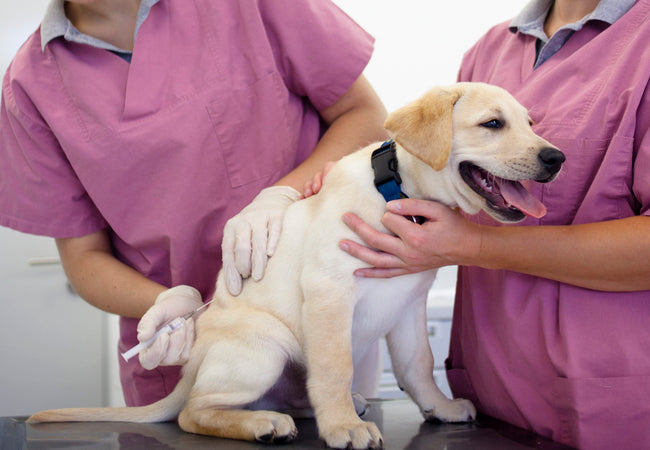Vet’s 2025 Guide to Canine Rabies 🩺 Prevention, Signs & Emergency Response

In this article
Vet’s 2025 Guide to Canine Rabies 🩺 Prevention, Signs & Emergency Response
By Dr. Duncan Houston BVSc
💡 What Is Rabies?
Rabies is a deadly viral infection of the central nervous system caused by lyssaviruses, most commonly transmitted by bites from infected wildlife or unvaccinated animals. Once clinical signs appear, it is almost invariably fatal.
🧠 How It Spreads
- Virus enters via saliva in bites/scratches, then travels through nerves to the brain.
- Incubation period typically 2–8 weeks but can range from 10 days to 1 year.
- Once in the brain, virus multiplies and migrates to the salivary glands, facilitating spread.
⚠️ Stages & Clinical Signs
1. Prodromal Stage (2–3 days)
- Behavior change: anxiety, withdrawal, unusual affection or irritability.
- Licking/biting at the bite or wound site.
- Fever, altered bark, hypersensitivity to light/sound/touch.
2. Furious Rabies (1–7 days)
- Aggression, restlessness, disorientation, seizure.
- Excessive drooling, foam at mouth, difficulty swallowing.
- Walking into objects, pica (eating non-food items).
3. Paralytic (“Dumb”) Stage
- Droopy jaw, paralysis, ataxia, progressing to full-body paralysis.
- Terminal respiratory paralysis leads to death within days.
📋 Diagnosis & Quarantine Rules
- In live dogs: presumptive based on clinical signs and bite history.
- Definitive diagnosis is only post-mortem via direct fluorescent antibody test of brain tissue.
- Quarantine laws: vaccinated dogs are isolated for 10 days; unvaccinated dogs often require euthanasia or extended quarantine.
🚫 Treatment & Control
- No effective treatment exists once clinical signs appear.
- Euthanasia is strongly recommended to prevent suffering and risk to others.
- Strict isolation for suspect dogs to protect animal and human contacts.
💉 Prevention & Vaccination
- Vaccination is the only effective prevention. In the U.S., annual or triennial revaccination is mandated by law.
- First vaccine at ≥12 weeks; fully immune 28 days post-vaccination.
- Travel guidelines: documentation varies by country; CDC update reduces paperwork for low-risk regions.
- Cost in 2025: approx. $40–$75 per shot.
🌍 Zoonotic Risk & Public Health
- Rabies is zoonotic—99% of human cases involve exposure to rabid dogs.
- Post-exposure prophylaxis in humans (vaccine + immunoglobulin) can prevent disease if given early.
- Prompt wound cleaning and medical consultation after a bite are critical.
🏡 Ask A Vet Home Support
- Track exposure incidents, vaccination dates, and booster reminders ⏰.
- Alert if your dog is bitten by wildlife or suspected rabid animal 🦇.
- Help coordinate quarantine compliance and vet follow-ups.
- Share bite incident details/photos with your vet quickly.
- Learn safe ways to avoid wildlife and stray encounters.
🔍 Key Takeaways
- Rabies is fatal once clinical signs appear—violent or paralytic forms.
- No treatment exists—euthanasia is humane and necessary for suspect cases.
- Vaccination is legally required in most areas and is the only preventive measure.
- Immediate action after exposure protects both pets and people.
- Ask A Vet simplifies vaccination tracking and exposure management.
🩺 Final Word ❤️
In 2025, canine rabies remains a global health threat, with no cure and devastating impact once symptoms appear. Prevention through vaccination, responsible pet ownership, and immediate response to bites are essential. The Ask A Vet app helps pet parents stay ahead, tracking vaccines, bite incidents, and managing follow-up care to protect both dogs and their families. 🐾✨
Visit AskAVet.com and download the Ask A Vet app to log vaccines, report bites, schedule boosters, share photos, and stay connected with your vet from anywhere. 📲






